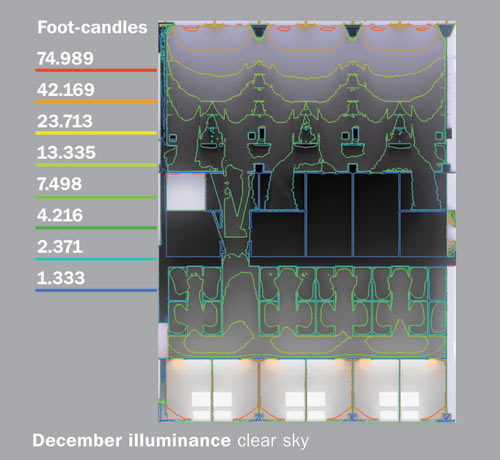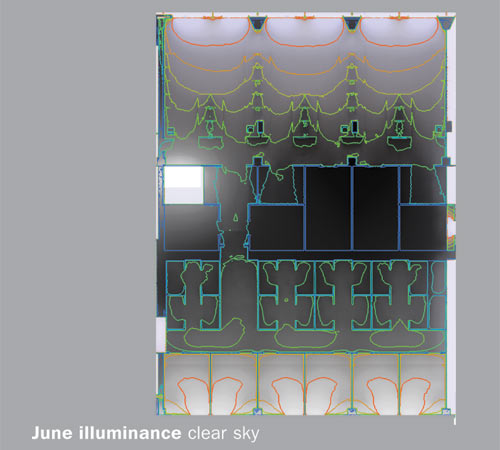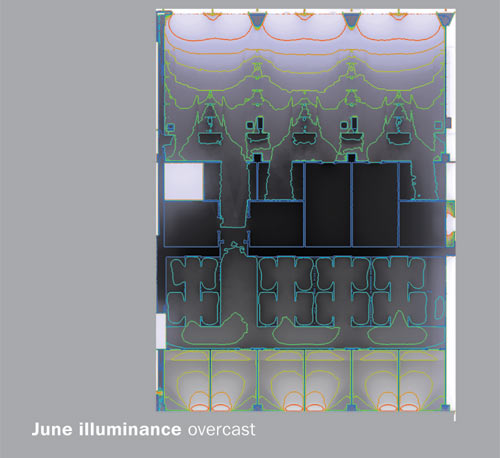Looking Back and Moving Forward
On some projects, the study also showed a disconnect between energy savings predicted through energy modeling and those actually realized. Notably, those HOK projects that scored highest in the CBE survey's thermal-comfort category were also the most efficient. "Thermal comfort wasn't sacrificed in order to achieve energy-use savings," says Mendler. The buildings that were found to be less efficient also tended to be those with the benefit of minimal or no commissioning, had no sustainable-design consultant as an integral part of the project team, or were subject to late design changes, she adds.
As a result of this examination, the firm is instituting a more integrated design process, placing more emphasis on commissioning with its clients, and investing more resources in analysis tools for daylighting and acoustics. One project that should benefit from these efforts is a 122,000-square-foot laboratory that the firm is designing for the school of veterinary medicine at the University of California, Davis, slated for occupancy in 2012. To refine the daylighting and sun-control strategy for the open lab and office suites, the HOK design team studied a physical model of the building using the Pacific Gas & Electric heliodon at the utility's Energy Center in San Francisco. It also used building information modeling (BIM) and simulation tools to compare glazing and facade options under a wide variety of environmental conditions in order to better understand foot-candle levels and avoid glare. "These types of analyses were not regularly part of our design process," says Mendler. "We would make design decisions based on average conditions and then have our engineers calculate the impact on energy use," says Mendler.
|
Although interest in POEs is growing as both owners and designers become increasingly interested in verifying performance claims, there is still no industrywide accepted method for conducting such an evaluation. But a handful of North American efforts do exist. For example, the White Salmon, Washington−based nonprofit organization the New Buildings Institute (NBI) has developed what it calls a "market friendly" POE protocol intended to provide a basic set of performance indicators. The protocol includes an energy-bill assessment, a facility-manager interview, and an occupant survey that requires minimal up-front documentation by the owner. "Our intent is for the process to take as little time as possible," says Cathy Turner, NBI senior analyst. The organization recently completed a pilot test of the protocol with a large Seattle-area school district and is searching for partners to help finalize the program for more widespread use.
A more comprehensive protocol has been developed by engineering and architecture firm Stantec, in conjunction with the Canadian not-for-profit EcoSmart Foundation. Tested on six Vancouver buildings, the resulting Building Performance Evaluation (BPE) tool (available free of charge at www.ecosmart.ca) outlines a process that integrates the CBE survey, a building-operator interview, energy and water consumption analysis, and physical measurements of environmental conditions, including indoor air quality, lighting levels, and acoustics.













